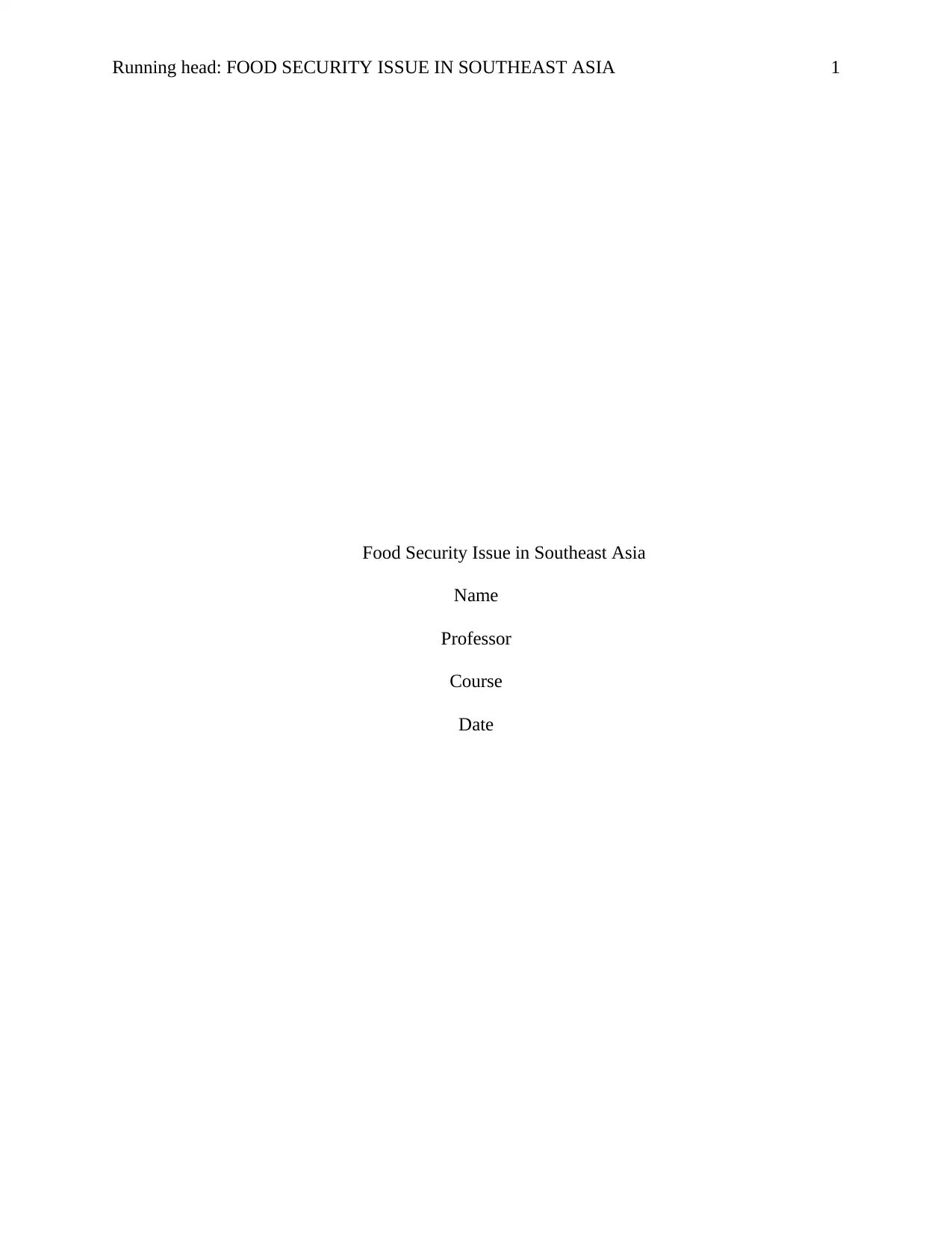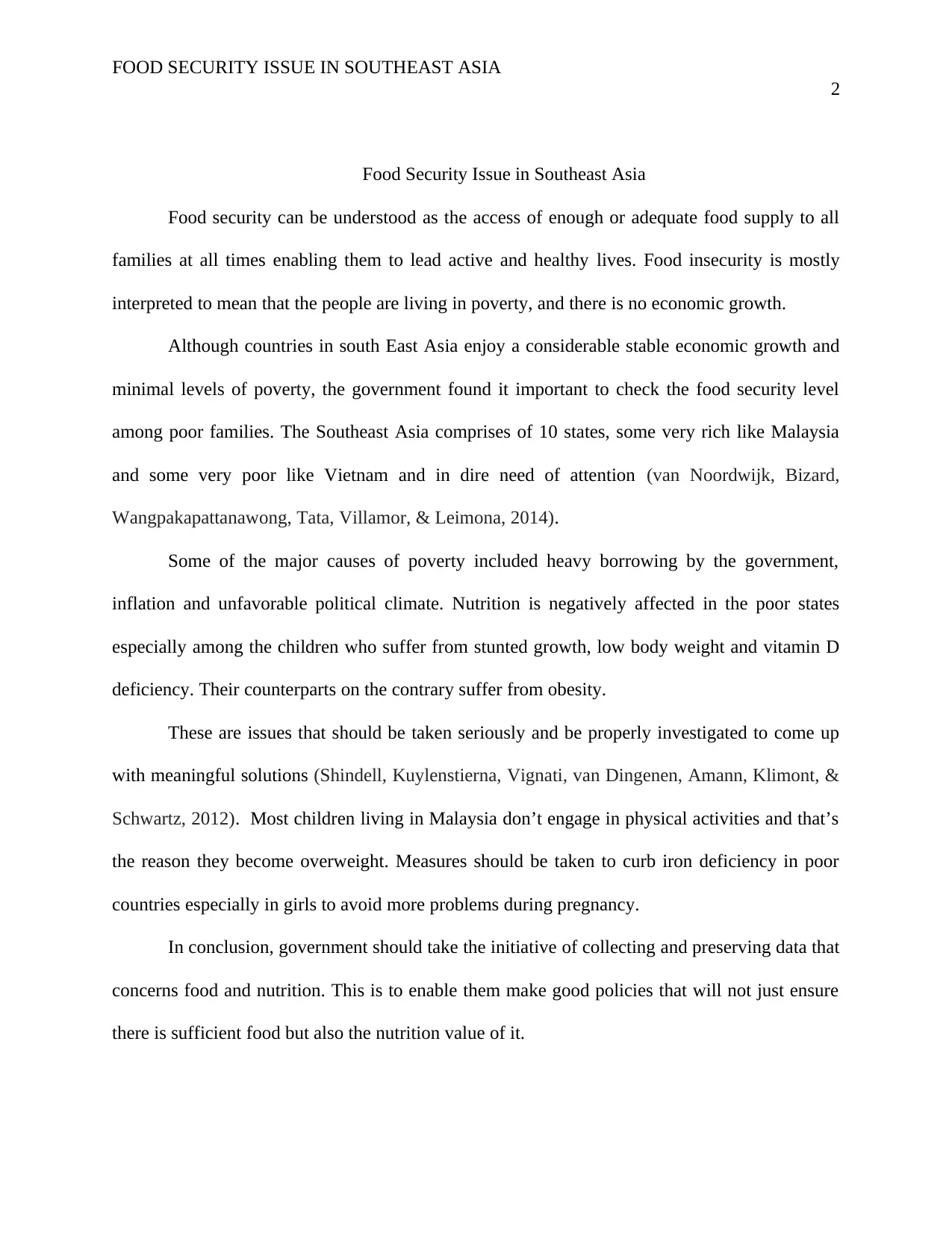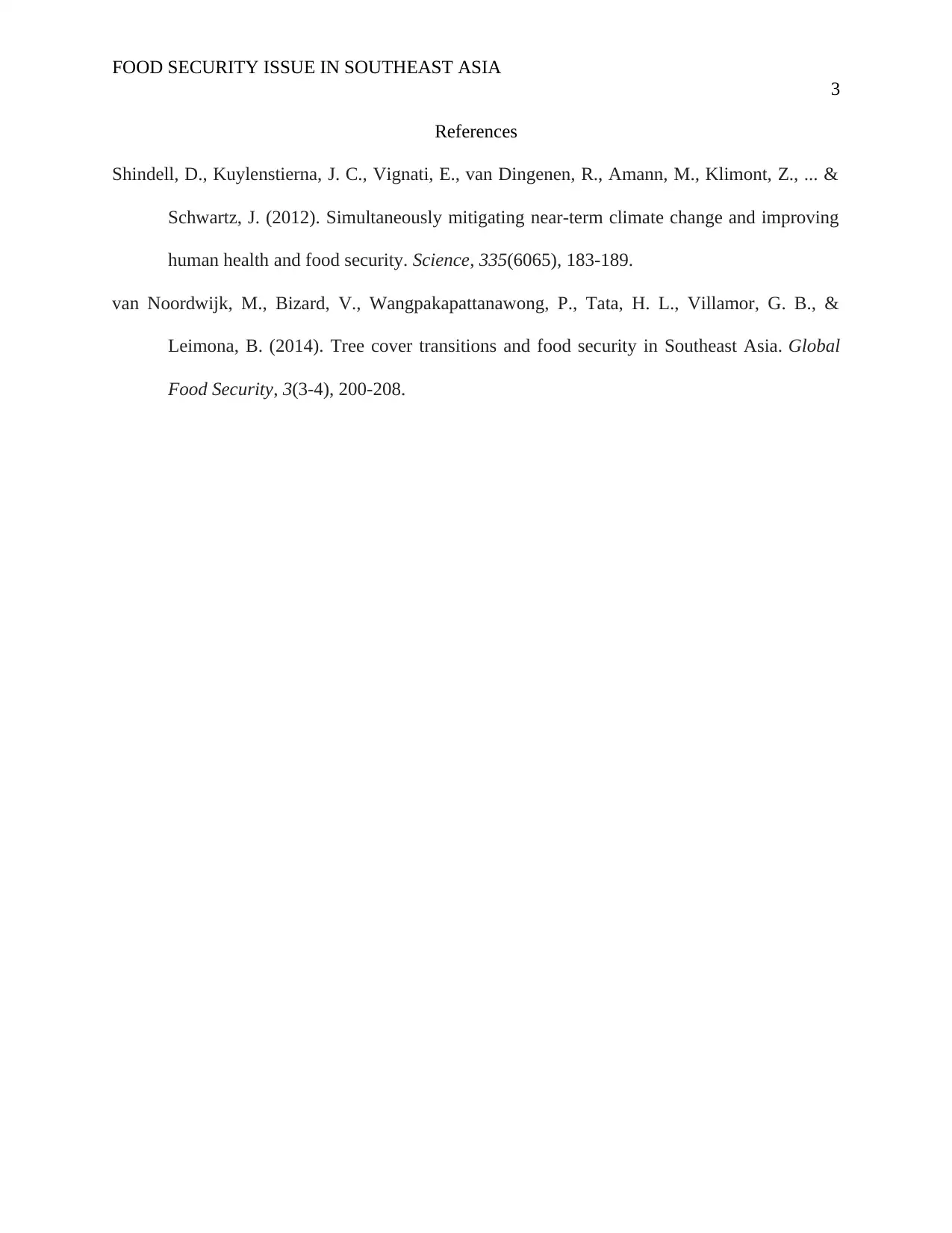Comprehensive Report: Food Security Challenges in Southeast Asia
VerifiedAdded on 2023/01/20
|3
|458
|58
Report
AI Summary
This report provides an analysis of food security issues in Southeast Asia. It defines food security and discusses the economic and social factors affecting it, including poverty, inflation, and political climates. The report highlights the nutritional challenges, such as stunted growth and obesity, and emphasizes the importance of government data collection and policy-making to ensure sufficient and nutritious food supplies. The report references studies on the region, underscoring the need for comprehensive strategies to address food insecurity and improve public health. It also touches on the importance of education in reducing food insecurity, as suggested by the Timor-Leste Living Standard Measurement Survey of 2001, and highlights the double burden of undernourishment and obesity in the region. The report concludes by advocating for measures to address iron deficiency and promote physical activity to improve overall health and food security in Southeast Asia.
1 out of 3





![[object Object]](/_next/static/media/star-bottom.7253800d.svg)